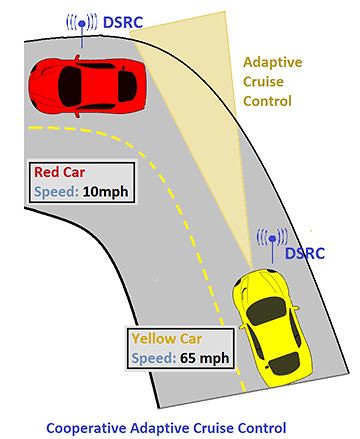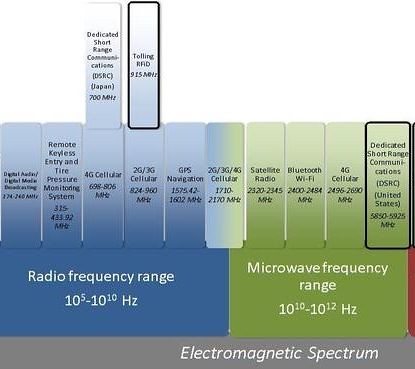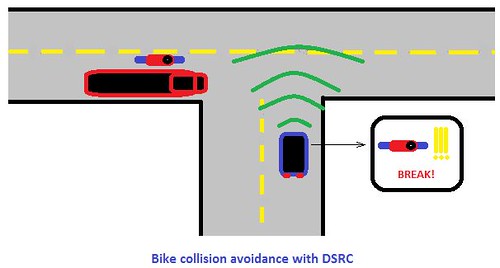Obama administration officials said today that they will propose requiring that automakers equip new cars and light trucks with Vehicle to Vehicle communications.
Transportation Secretary Anthony Foxx said the technology holds the potential to significantly reduce crashes, injuries and deaths on the nation’s streets and highways.
Safety officials said the government will issue a report later this month outlining its research on the new systems, and the National Highway Traffic Safety Administration will “begin working on a regulatory proposal” that will be issued before the end of the Obama administration.
A transponder would continually transmit the vehicle’s position, heading, speed and other information 10 times per second in all directions using the 5.9 GHz Dedicated Short Range Communications (DSRC) band.
The V2V network would contain two types of nodes; vehicles and roadside stations. Both use DSRC devices which work in 5.9 GHz band with bandwidth of 75 MHz and approximate range of 1000m.
The vehicle would receive the same information back from other vehicles and a vehicle’s computer would alert the driver to an impending collision. Some systems could automatically brake to avoid an accident.
Once automakers start adding the technology to all new cars, it is estimated to take 15 years or more for half the cars on the nation’s roads to be equipped, according to Qualcomm.
Drivers would also be alerted to a possible collision with a pedestrian or bicycle carrying a smartphone that continually sends out information to cars in the vicinity, even if it’s too dark to see the person or if the pedestrian darts suddenly into traffic.
Vehicular communications is usually developed as a part of Intelligent Transport Systems (ITS) which integrates communication between mobile and fixed nodes, using both wired and wireless communications.
Bill Ford, executive chairman of the Ford Motor Company, proposed partnering with the telecommunications industry to create cities in which “pedestrian, bicycle, private cars, commercial and public transportation traffic are woven into a connected network to save time, conserve resources, lower emissions and improve safety.”
Here’s My Proposal for self-driving cars in Portland. See Dailywireless stories on World Congress on Talking Cars, and 5.9 GHz Hits the Road
Posted on Mon, 03 Feb 2014 20:52:00 +0000 at http://www.dailywireless.org/2014/02/03/...g-forward/
Comments: http://www.dailywireless.org/2014/02/03/.../#comments






